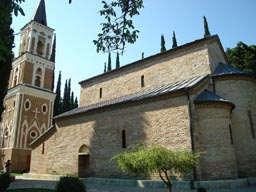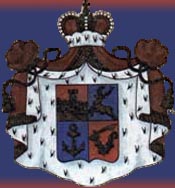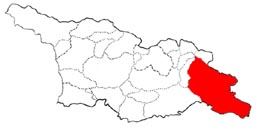
Kakheti
The Eastern Georgian province of Kakheti is bordered to the north by the small mountainous Georgian province of Tusheti and the Greater Caucasus mountain range, to the east and south by Azerbaijan, and to the west by the Georgian province of Kartli. Two major rivers run through the province: the Alazan in the East and the Iori in the West.
Kakheti was an independent feudal principality at the end of the 8th Century AD. At the beginning of the 12th century, King David the Builder successfully incorporated Kakheti into the United Kingdom of Georgia, and it retained this status for over 300 years. In the 1460s, after the disintegration of the United Georgian Kingdom, Kakheti became an independent Kingdom. In 1762, it joined the neighboring Kingdom of Kartli to form the Eastern Georgian Kingdom of Kartli-Kakheti. This Kingdom was weakened by frequent Persian invasions, and in 1801, Tsar Paul of Russia annexed it.
For over a century, Kartli-Kakheti was under Russian rule. In 1918, the year after the Bolshevik party of Vladimir Ilyich Lenin staged its coup in Russia, Georgia declared its independence. But this independence was short-lived. Bolshevik armies invaded Georgia in 1921; the next year, Georgia was incorporated into the new Union of Soviet Socialist Republics (USSR). In April 1990, as the USSR, weakened by internal upheavals began to unravel, Georgia once again declared its independence. In 1992, as an independent nation, its status was internationally ratified by its inclusion in the United Nations.
Kakheti, which was well-known as the principal wine-growing region in the USSR, continues to be shaped by viniculture. Recently, archeological excavations discovered grape seeds that date back to 7000-6000 BC. Perhaps the most impressive Kakhetian winery is the Tsinandali wine works, which began production in 1865. It is located on property formerly owned by Alexandre Chavchavadze, the famous poet and businessman, who started the wine making business there.

The Bodbe Monastery in Bodbe
Kakheti is also famous for its churches and monuments, including the Davit Gareji monastery which is partially built into the side of a mountain and the Alaverdi Cathedral, the second tallest church in Georgia with a high of more then fifty five meters. There are several national parks in the province. The first and foremost of these is the Lagodekhi National Park, which opened in 1912. More than just a place to relax, this park focuses visitors’ attention on the big diversity of plant and animal life that it hosts, as well as its landscapes and the complexity of the relationship between man and nature. Another Major Kakheti attraction is Sighnaghi, an historic settlement of over 2000 people. Sighnaghi recently underwent a restoration of its historical buildings, churches, and cultural monuments. Increasingly, tourists are attracted to the picturesque, charming town.
Source Bibliography:
- Begiashvili, L. Sighnaghi [Sighnaghi: guide]. Tbilisi: Sabchota Ssaqartvelo, 1982.
- Chkhkeidze,Tengiz. Sauplistculo mamulebi Kaxetshi. 1885-1921 [The principal landlords in Kakheti. 1885-1921]. Tbilisi:Metsniereba, 1968.
- Elanidze, Valerian, Kakhetis istoriis problemuri sakitxebi [Problematical questions of the history of Kakheti]. Tbilisi: Tsodna, 2006.
- Ioseliani, Platon, Putevie zapiski po Kakhetii [Travelers records in Kakheti]. Tifilis: Tipografia namestnika kantselarii Kavkazskogo, 1846.
- Khaukhchishvili, Simon, ed., Qartlis Tskhovreba; Vakhushti Batonishvili: Agtsera samephosa Saqartvelosa: [Life of Khartli; Vakhushti Batonishvili’s Describing Kingdom of Georgia] vol. IV., Tbilisi: Sabchota Saqartvelo, 1973.
- Metreveli, Marina, Kakheti [Kakheti]. Tbilisi: 2007.
[ TOP ]

